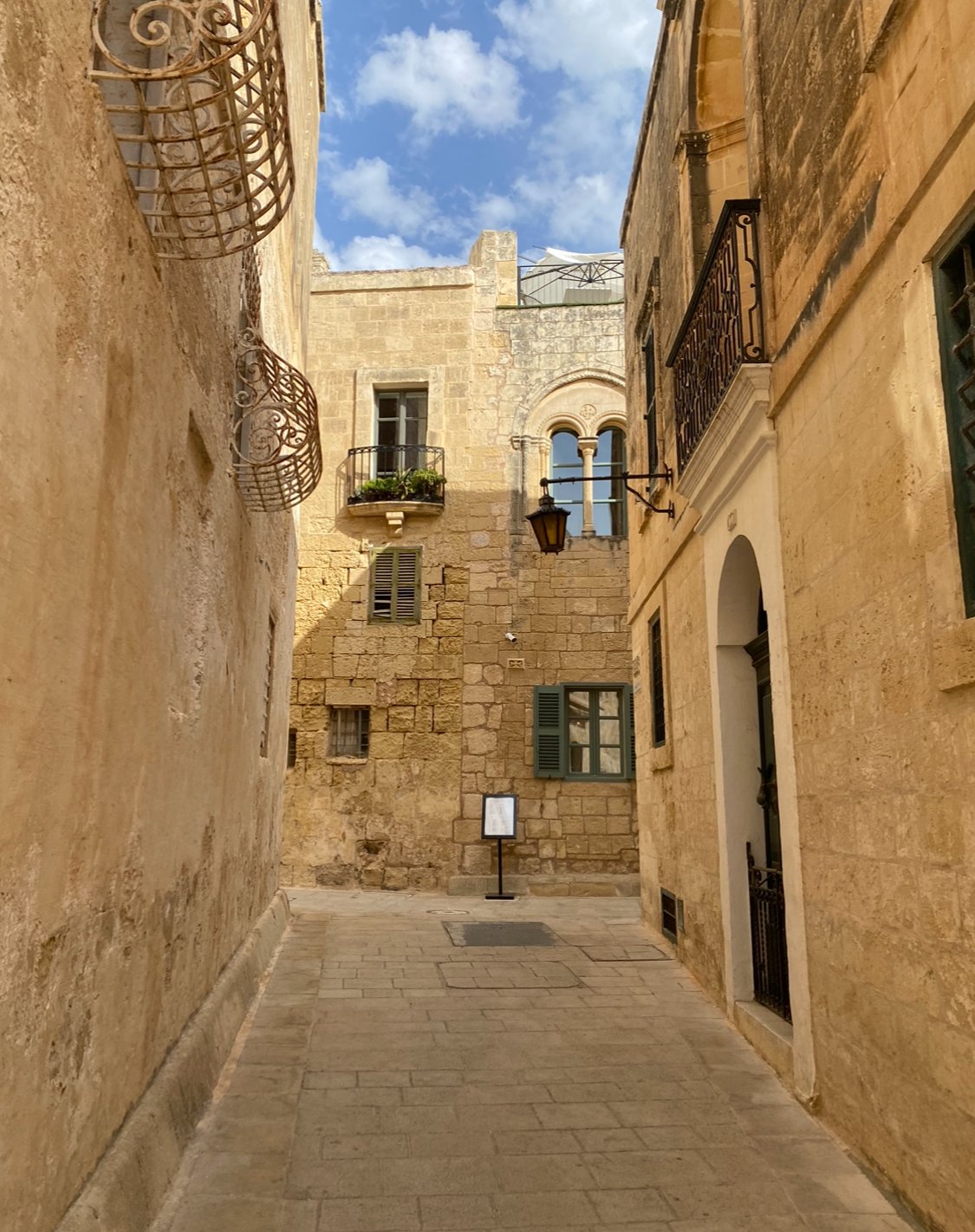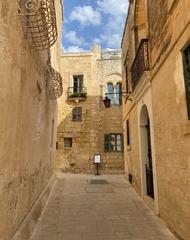
Mdina and Rabat, Malta: Visiting Hours, Tickets, and Historical Sites Guide
Date: 14/06/2025
Introduction: Mdina and Rabat – Malta’s Timeless Heritage
Mdina and Rabat, situated side by side in central Malta, are two of the island’s most treasured towns, steeped in over four millennia of history. Mdina, known as the “Silent City,” enchants visitors with its impeccably preserved medieval walls, Baroque palaces, and tranquil streets. Rabat, its bustling neighbor, is famed for early Christian catacombs, Roman ruins, and an authentic Maltese atmosphere. Together, these towns encapsulate the religious, architectural, and cultural evolution of Malta, making them essential stops for any traveler seeking to experience the island’s rich heritage (maltauncovered.com; travel2malta.com; The Whole World Is A Playground).
Whether exploring the grandeur of St. Paul’s Cathedral, descending into ancient catacombs, or strolling cobbled lanes lined with palazzi and chapels, Mdina and Rabat offer a journey through Malta’s layered past. This guide consolidates everything you need to plan your visit: site histories, practical details (visiting hours, tickets, accessibility), travel tips, and recommendations for immersive experiences.
Contents
- Ancient Origins and Early Settlement
- Roman Era and Urban Expansion
- Early Christian and Byzantine Influence
- Arab Rule and the Formation of Mdina and Rabat
- Norman, Medieval, and Baroque Flourishes
- British Rule and Modern Developments
- Visiting Mdina and Rabat: Hours, Tickets, and Access
- Top Sites in Mdina & Rabat
- Travel Tips and Unique Experiences
- Cultural Life and Events
- Preservation and UNESCO Status
- Frequently Asked Questions (FAQ)
- Practical Visitor Tips
- Media and Visuals
- Internal and External Links
- Call to Action
Historical Overview
Ancient Origins and Early Settlement
The region encompassing Mdina and Rabat is among Malta’s oldest continuously inhabited areas. Archaeological evidence points to settlements from the Bronze Age, with the Phoenicians establishing a fortified city—Maleth—on this strategic hill around the 8th century BCE. The city’s inland position provided protection from invaders and laid the groundwork for the towns’ enduring defensive character (maltauncovered.com; malta-guide.net).
Roman Era and Urban Expansion
Following the Roman conquest in 218 BCE, Maleth became Melita, a municipium and the administrative center of Malta. The city expanded, encompassing what are now Mdina and Rabat, and was adorned with villas, public buildings, and intricate mosaics. The Domvs Romana in Rabat, with its exquisite floor mosaics, is a testament to the city’s Roman aristocracy (medium.com; cityexplorermalta.com).
Early Christian and Byzantine Influence
Christianity’s roots in Malta are traditionally linked to St. Paul’s shipwreck in 60 CE. Rabat’s catacombs, dating from the 3rd to 8th centuries, reflect the transition from pagan to Christian burial and worship. The city remained a fortified Byzantine outpost, though it gradually declined in prominence as trade routes shifted (medium.com).
Arab Rule and the Formation of Mdina and Rabat
The Arab conquest (870 CE) reshaped the city, reducing its size for defense and introducing the names “Mdina” (from the Arabic for “city”) and “Rabat” (“suburb”). The Arabs left a lasting imprint on the urban layout—narrow, winding streets for shade and defense—and influenced the Maltese language and agriculture (malta-guide.net; cityexplorermalta.com).
Norman, Medieval, and Baroque Flourishes
The Normans captured Malta in 1091, restoring Mdina’s status as capital and transforming the city with palaces, churches, and monasteries. The Knights of St. John, arriving in 1530, enhanced Mdina’s fortifications and rebuilt much of the city in Baroque style after the 1693 earthquake. Notable landmarks from this era include the Vilhena Palace and St. Paul’s Cathedral, both exemplifying Baroque grandeur (maltauncovered.com; agirlenroute.com).
Rabat developed as a vibrant suburb, home to religious communities, craftsmen, and local Maltese traditions (travel2malta.com).
British Rule and Modern Developments
Under British rule (1800–1964), Mdina’s administrative role diminished, but preservation efforts increased. Both towns played roles as refuges in WWII due to their inland locations. Today, Mdina and Rabat are celebrated for their heritage, thriving local life, and unique blend of ancient and modern (travel2malta.com).
Visiting Mdina and Rabat: Practical Information
Mdina Visiting Hours and Tickets
- Mdina Gate & Streets: Open 24/7; free entry.
- St. Paul’s Cathedral: Mon–Sat, 9:00 AM–4:30 PM; Sun, 9:00 AM–12:00 PM. Tickets: ~€5 for adults.
- Cathedral Museum: 9:00 AM–5:00 PM daily.
- Vilhena Palace (National Museum of Natural History): Tue–Sun, 10:00 AM–4:00 PM. Tickets: ~€6.
- Palazzo Falson: Tue–Sat, 10:00 AM–5:00 PM. Tickets: ~€7, discounts available.
- Carmelite Priory Museum: Mon–Sat, 9:00 AM–4:00 PM.
Rabat Attractions and Entry
- Domvs Romana: Tue–Sun, 9:00 AM–5:00 PM. Tickets: ~€6.
- St. Paul’s Catacombs: Daily, 9:00 AM–5:00 PM. Tickets: ~€7 adults, ~€5 seniors/students, free for children under 12.
- St. Agatha’s Historical Complex: Tue–Sat, 9:00 AM–4:30 PM.
- Wignacourt Museum: Tue–Sat, 9:00 AM–5:00 PM. Tickets: ~€5.
- Casa Bernard: Visits by appointment only.
Combined tickets for multiple sites are available through Heritage Malta. Advance booking is advisable during peak seasons.
Accessibility
Mdina’s and Rabat’s historic layouts feature cobbled streets and steps, making full accessibility challenging. However, major sites such as St. Paul’s Cathedral and Domvs Romana offer accessible entrances—check individual sites for details.
Getting There and Around
- Public Buses: Regular routes from Valletta (routes 50–53); ~30 minutes.
- Parking: Available outside Mdina’s walls and in Rabat—cars are restricted inside Mdina.
- On Foot: Both towns are compact and walkable; comfortable shoes recommended.
Top Sites in Mdina and Rabat
In Mdina
- Mdina Gate: Iconic Baroque entrance, featured in “Game of Thrones.”
- St. Paul’s Cathedral: Baroque masterpiece with stunning dome and artwork.
- Cathedral Museum: Religious art, silverware, manuscripts.
- Palazzo Falson: Historic house museum with art, antiques, and rare books (Palazzo Falson).
- Carmelite Priory: Baroque priory with guided tours (Carmelite Priory).
- Bastion Square: Panoramic views over Malta.
In Rabat
- St. Paul’s Catacombs: Malta’s largest early Christian burial complex (Heritage Malta).
- St. Agatha’s Historical Complex: Crypts and ancient frescoes (St Agatha Malta).
- Domvs Romana: Roman mosaics and statues.
- Wignacourt Museum: Artifacts, WWII shelters, and St. Paul’s Grotto (Wignacourt Museum).
- Casa Bernard: 16th-century palazzo with guided tours (Casa Bernard).
Travel Tips & Unique Experiences
- Guided Tours: Enhance your visit with expert-led walks covering hidden corners and in-depth history.
- Local Cuisine: Sample pastizzi, rabbit stew, and pastries at Rabat’s bakeries or Mdina’s tea rooms (Grumpy Camel).
- Photography: Visit Mdina at sunset or after dark for magical, crowd-free scenes.
- Cultural Events: Attend annual religious festas, the Mdina Grand Prix, and historical reenactments.
- Film Locations: “Game of Thrones” fans can spot iconic sites used as King’s Landing (The Whole World Is A Playground).
Cultural Life and Modern-Day Significance
Mdina’s population is under 300, and vehicle restrictions maintain its peaceful character. The city is a haven for artisans and noble families, while Rabat thrives as a local hub with markets, feasts, and vibrant community life. Both towns are renowned for their hospitality, religious traditions, and unique contributions to Malta’s living culture (GuideMeMalta).
Preservation and UNESCO Status
Mdina is on Malta’s UNESCO tentative list for its exceptional medieval architecture and historical importance. Preservation is managed by Heritage Malta and local authorities, ensuring these towns remain living monuments (UNESCO).
Frequently Asked Questions (FAQ)
Q: What are Mdina’s visiting hours?
A: The city is open 24/7; museums and attractions generally open 9:00 AM–5:00 PM.
Q: Do I need tickets for Mdina?
A: Entry to Mdina is free; tickets are needed for cathedrals, museums, and catacombs.
Q: Are guided tours available?
A: Yes, guided and audio tours are widely available.
Q: Is Mdina accessible for wheelchair users?
A: Some sites are accessible, but narrow streets and steps can be challenging.
Q: Where do I park?
A: Use car parks outside Mdina’s city walls or in Rabat.
Q: Are there COVID-19 guidelines?
A: Check official sites for the latest health protocols.
Practical Visitor Tips
- When to Visit: Spring and autumn offer pleasant weather and fewer crowds.
- Duration: Allocate at least a full day to explore both towns.
- Dining: Try local specialties in Rabat’s bakeries and Mdina’s cafés.
- Accommodation: Stay in Rabat for more options; Mdina offers exclusive boutique hotels.
- Dress Code: Modest attire is required in religious sites.
Media and Visuals
- Use images of Mdina Gate, St. Paul’s Cathedral, Rabat’s catacombs, and panoramic views from Mdina’s ramparts.
- Alt tags: “Mdina city gate entrance at sunset – Malta historical sites,” “Interior of St. Paul’s Cathedral in Mdina,” “St. Paul’s Catacombs in Rabat – visitor attraction.”
Internal and External Links
- Consult Heritage Malta for up-to-date site info and bookings.
- Additional official sources:
Call to Action
Start planning your journey through Malta’s Silent City and its storied suburb! Download the Audiala app for the latest ticket info, guided tour options, and insider tips. Explore our related articles for comprehensive Malta travel guidance, and follow us on social media for updates and exclusive content.
Sources
- Malta Uncovered: Mdina and Rabat Malta Guide
- The Whole World Is A Playground: Malta Itinerary
- Maltaculture: Rabat Malta Guide
- Travel2Malta: Mdina Walking Tour Guide
- Medium: Rabat and Mdina History
- Heritage Malta – Official Site
- GuideMeMalta: Mdina & Rabat Heritage
- Palazzo Falson Museum
- St Agatha Malta
- Wignacourt Museum
- UNESCO Tentative List – Mdina
